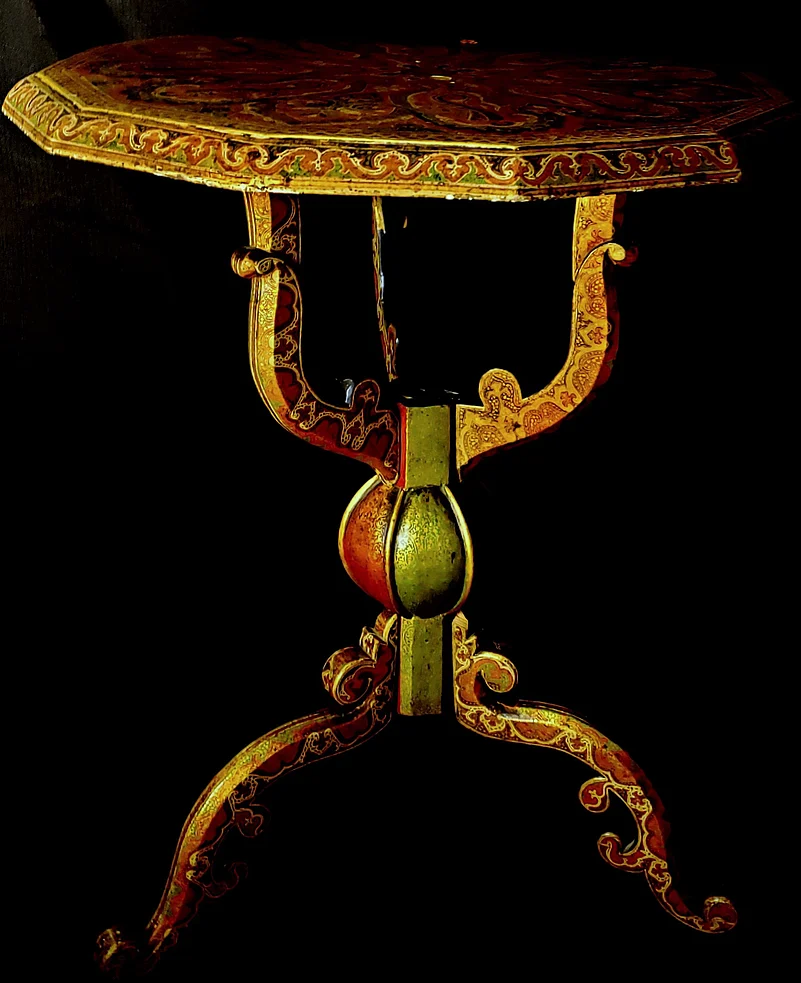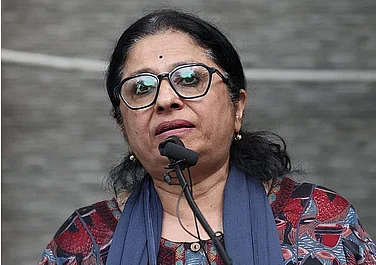I met Zulfiqar Ali by chance at the home of renowned Kashmiri artist Masood Hussain, who affectionately called him Zulfi. Masood introduced Zulfi as a passionate “collector” of Kashmiri handicrafts, including shawls and papier-mâché items. “He is a Museum in himself,” Masood said. Then, he quickly corrected his statement. “Not collector. That would be undermining his work. He is a researcher of Kashmiri art. He has researched and studied these antiques, and now he has fallen in love with them,” Masood said, chuckling.
He went on. Zulfi, he said, has thousands of exquisite pieces in his collection, particularly shawls, sourced from all corners of the globe-from Jordan to France and Italy to Egypt. "His passion for collecting Kashmiri handicrafts is sheer madness," Masood said, astonished by what Zulfi intends to do with his vast collection of treasures. Zulfi was blushing. Perhaps he was pleased and, at the same time, amused by Masood’s appreciating words.
Zulfi, however, remained humble about his accomplishments, acknowledging the breadth of his collection while expressing frustration. He has no house in Kashmir and prefers to stay at Masood’s house.
Many in Kashmir find it hard to believe that his collection is driven purely by passion rather than profit. He tries to convey that his love for art transcends monetary gain, yet few seem to believe him.
Having lived in the USA for many years, Zulfi speaks with an American English accent. Still, when he converses in Kashmiri, his words take on an exquisite, lyrical quality that captivates those around him. His speech is a blend of Kashmiri and American English, often interwoven with lines from Ghalib’s poetry, which adds depth to the conversation.
Let us see his collection first.



Over a twenty-year effort, he was fortunate to own a considerable cache of shawls and textiles from the mid-1700s to the early 1900s, a variety of objects in engraved and repousse silver and copper, carved walnut wood objects and furniture, and many examples of the lost art form of Kashmiri enamelware.
His collection also includes antique drawings and paintings, including several by the well-known Kashmiri artist D. N. Wali, rare photographs, newspaper etchings from the 1800s, and other antique documents. One such rare document is an original receipt, dated 1809, for selling a Kashmir shawl for 3,600 Francs to the queen of France, Josephine Bonaparte (nee Beauharnais).

Zulfi was born and raised in a neighbourhood in Kashmir where his ancestors have lived for centuries, one of whom he fondly names Baba Hassan. His childhood and youth were filled with joy; he excelled both as a sportsperson and in his studies. He won five gold medals until his graduation. After earning an MBA from the University of Kashmir, he moved to the USA and established a successful life.
Despite his achievements, Zulfi deeply yearned to return to his roots. His love for Kashmiri art and a strong sense of identity fueled this desire. While the longing for one’s birthplace is a universal sentiment, for Kashmiris, it often runs even more profound. I once read a piece on Afghan truck poetry that included a line resonating with me: “Everyone’s homeland is Kashmir.” Just imagine a Kashmiri living abroad who doesn’t yearn for home. For those from the Old City, this longing is even more intense. Even in Manhattan, you’ll hear, “We are from downtown Srinagar.” Zulfi belongs to that proud lineage of downtown boys.
Determined to make a difference, Zulfi began collecting ancient Kashmiri artefacts and researching their histories, igniting a journey that would last two decades. What started as a passion quickly evolved into what Masood lovingly calls "madness."
As Zulfi learned of anyone possessing an old shawl or other traditional handicrafts, he would rush to acquire them. He even bought some pieces in Jordan and once discovered a 17th-century shawl at a mechanic's shop in the USA, where it had been used to cover his sofa. The mechanic was puzzled by why someone would pay a reasonable sum for what seemed like an ordinary piece of cloth. Still, Zulfi understood its true value as something he could fully appreciate. “Europeans know the value of art better than Americans.”
As the son of a once-famous papier-mâché businessman and a relative of others involved in the craft industry, Zulfi has gradually found contentment in his work.
He didn’t abruptly start buying Kashmiri handicrafts. He knew the art and handicrafts well. But he began his journey studying and researching Kashmir's art forms, particularly the Kashmir shawls. But he did it, not from the perspective of an emotionally vested, ethnocentric activist but as an objective and analytical student and scholar - an ongoing effort that he continues to build on. The obvious next step for him was the search and acquisition of every art form of Kashmir that he could find or could afford, with each object further validating the extraordinary artistry, knowledge, sincerity and skill of the nameless and faceless artists. And over the years, he did it.
But, once the euphoria of acquiring and admiring these artefacts somewhat abated, he recognised that simply owing and admiring them served little purpose, considering my own fickle mortality, among other things. So, very quickly, he shifted his focus to where he saw these artefacts as a medium, not an end in itself —a living legacy that needs to be shared with the world, a story that needs to be told, a message that needs to be sent to the world about the incomparable art forms of India. He also saw his collection as a means to inspire the youth to take up the noble art forms of their ancestors, to help elevate the status of these art forms from their current state of artistic compromise and low quality, to genuinely help economically uplift the craftsman across India and even to give vent to his creativity and build curated collections that reflect the highest quality and artistry of our crafts.
With these goals in mind, he began, highly optimistically, by creating videos about his collection on social media and a website that showcases his collection. Sadly, the response, especially in Kashmir, was lukewarm, at best, with some congratulating him on his ‘new business’ and others asking, ‘ So, how much money did you make from this. Zulfi has a beautiful sense of humour. He says only those who paid attention were businessmen who copied the patterns of his shawl and walnut wood collections without permission or acknowledgement.
He tried explaining to people that he was not in any kind of business, but no one understood him. He had a great desire to tell the Kashmiri story through Kashmiri art. But then everyone thought the Kashmir story could not be told through art and artefacts. They could only be sold.
For ten years, he went from one museum to another in the US, begging for a chance to give a brief lecture and showcasing a small sample of his vast collection. Still, with one or two exceptions, these efforts were met with excuses and indifference. In one case, he was told that the reason museums were not responsive was that he, as Kashmiri, was too emotionally attached to his collection’ and that they prefer ‘people who have no skin in the game.”
He often reflects on why no one recognises the potential for a Kashmiri handicrafts museum, especially since he possesses the most extensive collection, gathered from Europe, the USA, Central Asia, and the Middle East, not a single piece from Kashmir itself. “Why doesn’t anyone understand how our ancestors travelled to these lands and established a thriving handicraft trade? Why is no one willing to listen?” he muses, frequently quoting Ghalib to underline his determination that his struggle will continue.
Paate nahin jab raah to chadd jaate hain naley
Rukti hai meri ta’ba, to hoti hai rawaan aur
(Streams, when dammed, don’t stop but rise
just so, when after suppressed, I reach for the skies)
I hope someone listens. Zulfi Ali indeed has a great story to tell about Kashmiri handicrafts—better than those who have been in business for longer. Zulfi is not in business.



























